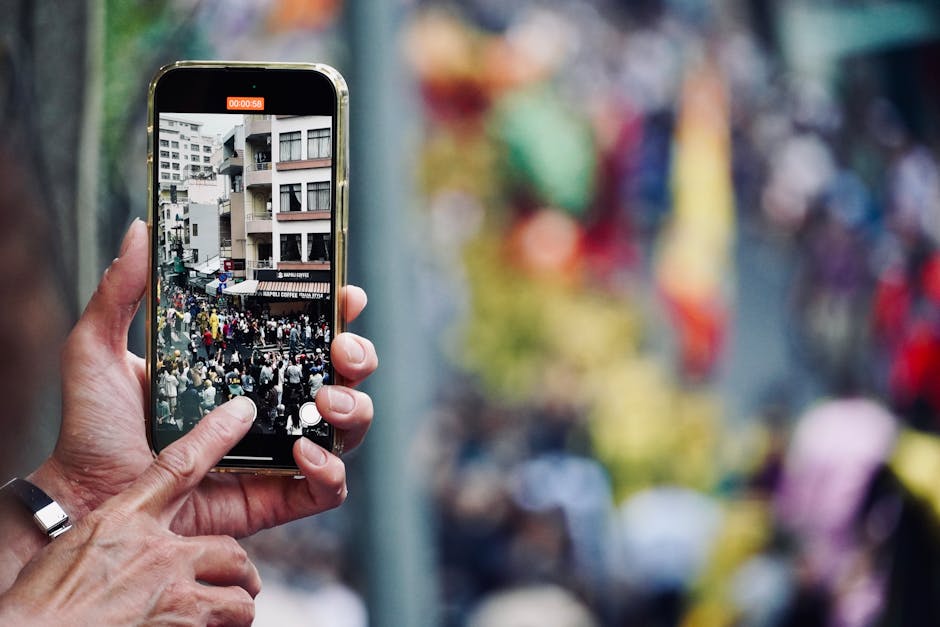Is Pinterest social media? That’s a question many of us kind of wonder about, especially now, in 2025, where all these online places just keep changing what they are. You know, back when the internet was still, well, younger, it was pretty simple to say what was what. You had your email, then maybe a forum, and then the big social media places started popping up. But Pinterest, it always felt a little bit different, didn’t it? Like it had its own thing going on.
People normally think of social media as somewhere you go to talk to friends or see what your family is doing. You scroll through feeds, you comment on photos, and you share your own stuff, right? That’s the usual picture in your head, I bet. But Pinterest, it’s not quite that. It’s more of a visual search engine for some folks, while for others, it’s like a big, never-ending magazine full of ideas. So, figuring out where it fits, that’s not always so easy, really. It kind of sits in its own little spot, somewhere in between.
What Even Is Social Media, Really, Nowadays?
So, if we’re going to talk about Pinterest, we probably need to get a handle on what “social media” even means these days. Because the definition, it’s not really fixed, you see. It used to be all about connecting people directly, one-on-one or in groups. You shared life updates, you showed off your dinner, you posted vacation pictures. That was the main point of it, pretty much.
But things have changed, haven’t they? Now, many platforms, they are about more than just your friends. They’re about content, too. Sometimes, a whole lot of content. You follow creators, you watch videos, you read articles, and you might not even know the people making all that stuff. It is that content part which has really gotten bigger, it seems. And that makes the lines blurry.
Some platforms, they might focus on short videos, some on pictures, others on just text. The common thread, typically, is that there’s some way for people to interact. Liking, sharing, commenting – those are the usual signs. But the degree of that interaction, and what it’s focused on, that can really vary a lot from one place to another. So, the old simple rules, they don’t always apply anymore.
Pinterest: More Than Just Pictures? A Look at the Platform’s DNA.
Let’s think about Pinterest for a moment, how it’s designed and what it does. Its core thing, its main purpose, always has been about discovery and saving. You go there to find ideas, right? For your home, for a recipe, for an outfit, for a trip you want to take. It’s like a giant digital corkboard where people pin images and links that inspire them or that they want to remember.
These things you save, they’re called “pins,” and you put them onto “boards.” These boards are like your own little collections, organized by whatever topic you want. It is normally that you’re looking for something specific, or maybe just browsing for some fresh thoughts. You’re typically thinking about what you want to do or what you want to create, not who you want to talk to.
The search bar on Pinterest is, truthfully, used by many, many people. They type in what they are looking for, just like on a search engine. And then they get a whole bunch of visual results. This makes it feel very much like a tool for looking up things, a really good one for visual stuff, not so much a place for chatting with people you know. That difference, it’s a big one in how you use it.
The “Social” Bits: How Pinterest Connects Us (Kind Of).
Even if Pinterest feels different, it definitely has some parts that you could, perhaps, call social. For one, you can follow other users. So, if you like someone’s style or their cooking ideas, you can keep up with what new pins they’re adding to their boards. This is a bit like following someone on Instagram, wouldn’t you say? You’re interested in their content.
Then there are comments. People can actually leave comments on pins. Sometimes they ask questions, sometimes they share their own experiences with a recipe or a craft. It’s not a super chatty area, usually, but the option is there. And you can also send pins to other people, maybe a friend, if you think they’d like an idea or a product. So there is that sharing aspect too.
Group boards are another thing. These are boards where several people can pin together. Imagine planning a wedding with friends, or maybe a renovation project with your partner. You can all add ideas to the same board. This really feels like a shared space for collaboration, which is certainly a social activity. So it’s not completely cut off from human interaction, no.
Where Pinterest Doesn’t Quite Fit the Social Mold.
Despite those social bits, Pinterest doesn’t really play by all the same rules as your typical social media sites. The biggest difference is the focus. On places like Facebook or Instagram, the person is often the main thing. You see posts from people, you interact with people. But on Pinterest, the idea or the picture or the product is usually the star.
You don’t typically see a “feed” of your friends’ life updates on Pinterest. It’s more of a curated stream of things you might like, based on what you’ve pinned before. Your home feed is tailored for discovery, not for keeping up with who your friend went to lunch with. People generally don’t post selfies or updates about their day there; that’s just not what it’s for.
Also, the conversations on Pinterest are, normally speaking, much less back-and-forth. You might get a comment or two, but it’s not designed for the kind of continuous conversation you’d have on a messaging app or in a comment thread on X (formerly Twitter). The goal is usually to get the idea and move on, not to hang around and chat. So, it’s not really a place for live, casual talk.
So, What’s the Verdict for 2025?
Considering all these things, where does Pinterest land in 2025? It’s not a simple answer of “yes” or “no.” It is considered to be a hybrid platform, I suppose you could say. It has strong elements of a visual search engine, a place for finding and saving ideas. That’s a very big part of its identity, its actual use by people. Many people use it for just that.
But then, it also has these parts where people do connect, where they share, and where they collaborate. It’s not about building a profile of your personal life for all your friends to see, normally. It’s about building a collection of ideas and sharing those specific ideas with others who have similar interests. So, the “social” aspect is often tied to the content itself, not the people as much.
You might say it’s a “social discovery platform.” It uses social mechanics – following, sharing, commenting – to help people find and save things they like. So, it’s not strictly social media in the traditional sense, but it definitely uses social tools to work. It occupies its own special category, making it a bit of both worlds, really. It’s a bit different, and that’s alright.
Conclusion
In the end, asking “is Pinterest social media?” in 2025 doesn’t have a perfectly clean answer. It’s like trying to put a square peg in a round hole sometimes, because Pinterest is truly a unique bird. It functions as a powerful tool for discovering new things and keeping track of inspiration, but it also provides avenues for connection and sharing. It just does it in a way that prioritizes the ideas over the day-to-day chatter of personal lives. Maybe it’s not social media in the same way Facebook or Instagram are, but it’s certainly not anti-social. It just has its own flavor of socialness, a very specific kind.
—
FAQ: Is Pinterest Social Media?
Q1: Is Pinterest really a social media platform in 2025?
A1: Well, it’s complicated. Pinterest has social features like following and commenting, but its main point is normally finding and saving ideas, not sharing personal life updates. It’s more of a visual discovery tool with social functions.
Q2: How is Pinterest different from other social media sites?
A2: Typically, Pinterest focuses on content and ideas rather than people’s daily lives. You use it for inspiration and saving things you like, whereas many social media platforms are primarily for connecting with friends and sharing personal news.
Q3: Can you connect with friends on Pinterest?
A3: Yes, you can. You can follow friends to see their pins, comment on pins, and even collaborate on group boards. So, there are ways to interact socially, but it’s not the main reason most people go there.
Q4: Is Pinterest considered a search engine or social media?
A4: Many people think of Pinterest as a visual search engine because you use it a lot to find specific ideas or products. However, because it has features that let you connect with others, it also shares some characteristics with social media. It sits somewhere in the middle.
Q5: Why do some people say Pinterest isn’t social media?
A5: People might say that because its primary goal isn’t personal interaction or sharing your life. It’s more about personal interests and inspiration. The “social” parts are often about sharing or discussing specific content, not general conversation or personal updates.










